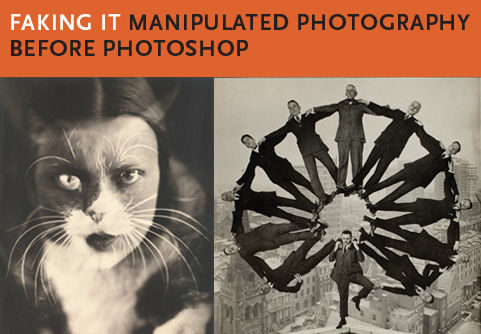What age do you think this photo is?
I actually have a pretty good idea of the age of this photo, as it is a photo of my Great grandmother and Grandfather and my Grandfather wrote an important clue on the back, which I will tell you about later. But what if my Grandfather had not given me a clue, how could I discover the date this photo was taken?
Dating old photos requires some detective work, you have to look for clues. Factors such as the type of photographic process used; who the photographer was, when they operated, and the size of the photo are all important clues. For paper printed photos, the type of mount and the information printed on the back of the mount also give clues about the age of the photo. The clothing people are wearing the studio setting, the props and background provide additional information.
Photographic Process : The photo is mounted on card, it has a slight purple tinge to it and it is smooth and glossy. The photo is a paper based print and not a negative. This eliminates some earlier photographic processes such as daguerreotypes, ambrotypes and tintypes. When the photograph is enlarged you cannot see the underlying paper texture. This means the photo has at least three layers, which narrows the range of print types to either a Gelatin or a Collodian printed out print. If it is a Collodian printed out print it will have three layers making up the print and the paper fibres will not be visible when you look up close at the highlights and mid-tones (apart from the damage). Looking at the photo closely, and combined with the other factors it appears the photo is a Collodian printed out print, a photographic process used between 1865 to 1920. That is quite a wide range, so we need to look at some of the other clues.
Photo mount: The photo measures 4 ¼ by 6 ½ inches (10.7 by 16.5cm), and apart from my Grandfather's handwriting on the back it is completely blank. This size of photo is known as a Cabinet Card, not a smaller carte de visite. Roger Vaughan, an English collector of early photographs, has identified some useful stylistic mount characteristics of these cards which can be used for dating. Cabinet cards were often blank on the back in the 1900 period, with no printed matter. This cabinet card has rounded corners, again this indicates it was produced around 1900, because after 1900 Cabinet cards were square with embossed borders.
The photographer: At the bottom of the photo it says Frank J Denton and in brackets (Late A Martin), Wanganui, New Zealand. This suggests to me that Denton may have bought Martin's business. Denton is listed on the Auckland City Photographers Database, a wonderful resource which can be accessed online via the Auckland Public Library site. Denton is listed as operating in Wanganui around this time (at the time of my original search, a little later) and Alfred Martin is listed as being in Wanganui until the late 1890s. I did a search on Papers Past, in the Wanganui Chronicle 1899 and found a very interesting Public Notice:
So I believe Denton had only recently taken over this business when my great grandmother and grandfather had their photo taken.
Clothing Styles: My Grandfather was born in September 1896 and his mother in
1871. She was an assistant teacher. He looks about 3 to 4 years old. My Great grandmother is wearing a masculine styled coat dress with a high collar and the top of her sleeves are quite small and not the large puffy style that was popular in the 1890s, indicating that its a later style. Consulting a reference on dress styles, in the early part of the 1900s progressive women who were working adopted a more masculine style of dress. Her coat dress was popular in the early 1900s. My Grandfather is dressed in an Edwardian style.
It is pretty clear from my analysis that the photo was taken either late 1899 or early 1900 which is confirmed by the clue my Grandfather wrote on the back of the photo:
"Mother and me at Norsewood about 1900"
Now I just have to work out what they were doing in Norsewood at that time, but that is another mystery to be solved.....
Some useful references:
For NZ photographers since 1840 - the photographic database link is:
Some links on clothing styles and fashions
http://www.fashion-era.com/Dating_Costume_History_Pictures/how_to_date_photographs_top.htm
Copyright Carterworks NZ





























 The school hallway 1920s
The school hallway 1920s Junior school 1920s
Junior school 1920s




 Kelburn School from the Glen
Kelburn School from the Glen